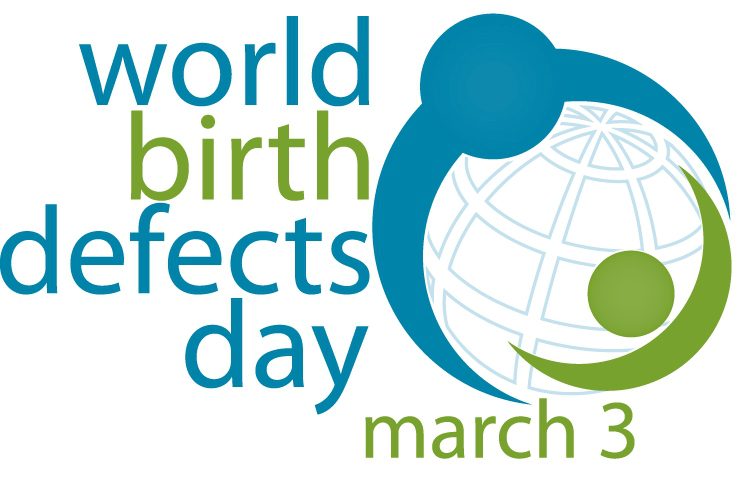PASAY CITY - Last October 24-25, the Newborn Screening Society of the Philippines (NSSP) and the Newborn Screening Reference Center (NSRC-NIH, UPM) gathered 1800 professionals, practitioners, guests, and newborn screening advocates for the 14th National Newborn Screening (NBS) Convention at the Philippine International Convention Center in Pasay City. The convention was even made more special with the celebration of the first two decades of newborn screening in the Philippines as reflected on its theme “Celebrating 20 years of Newborn Screening towards Overall Screening and Management”.
 |
| PSOD President Cynthia Magdaraog and her son, rare disease patient-advocate Juan Benedicto "Dickoy". Photo: H&L Philippines |
During the convention, local and international speakers shared implementation strategies, developments and recent technologies in newborn screening. Among the plenary speakers was Philippine Society for Orphan Disorders (PSOD) President Mrs. Cynthia Magdaraog who encouraged everyone in attendance not only to advocate for newborn screening but also for rare diseases.
At present, three out of the six conditions in the 6-test newborn screening panel fit to the current accepted definition of a rare disease in the Philippines - a condition with a prevalence of 1 in 20,000 or lower. These include Galactosemia, Phenylketonuria and Maple Syrup Urine Disease. With the recent introduction of expanded newborn screening, it is now possible to detect more than 20 additional rare disorders, as well as provide timely and appropriate treatment for these conditions.
In her talk “Hope for Persons with Rare Disease”, Mrs. Magdaraog cited global and local definitions, common characteristics of rare diseases, and the PSOD registry. As of June 2016, the PSOD registry is composed of 272 patient families, 64 rare disorders and 7 patient support groups.
She also shared a 13-minute video presentation of three rare disease cases– Gauche disease patient, Pauline; Hunter’s syndrome patients, the Parco Brothers; and Blue Rubber Bleb Nevus syndrome patient, Ziv.
According to the PSOD President, there is a public-private collaboration of four pillars that has made the transformation of lives possible for rare disease patients. In its early years, the first three pillars namely the Institute of Human Genetics of the National Institutes of Health – UP Manila (IHG-NIH, UPM), the PSOD, and the private sector which includes NGOs, pharmaceutical companies and donors were the most active in supporting rare disease patients.
Mrs. Magdaraog recounted that rare disease support in the country started when the doctors at the Institute of Human Genetics (IHG-NIH, UP Manila) looked for treatment for diagnosed patients in 1991. In 2006, the PSOD was founded through the efforts of then IHG director Dr. Carmencita Padilla, IHG physicians, rare disease patient families and advocates in order to sustain the efforts initiated at the IHG.
Mrs. Magdaraog recounted that rare disease support in the country started when the doctors at the Institute of Human Genetics (IHG-NIH, UP Manila) looked for treatment for diagnosed patients in 1991. In 2006, the PSOD was founded through the efforts of then IHG director Dr. Carmencita Padilla, IHG physicians, rare disease patient families and advocates in order to sustain the efforts initiated at the IHG.
She also noted that the support of the government, the fourth pillar, eventually materialized. In 2011 and 2013, the Department of Health (DOH) provided grants through the Rare Disease Medical Access Program. Furthermore, the recent enactment of the Rare Diseases Act of the Philippines (RA 10747) last March 3, 2016 will institutionalize a sustainable system of comprehensive care through the involvement of the government through the DOH, PhilHealth, PCSO and other allied government agencies.
Mrs. Magdaraog also spoke on her personal struggles as a mother of a rare disease patient, Dickoy. She mentioned that they were once told that her son with Pompe disease would only live until his 30th year. Now, her son is an Industrial Design graduate and an accomplished 39-year old entrepreneur despite only being able to move his wrists.
From her personal experiences and the recent developments in rare disease support in the country, Mrs. Magdaraog expressed her strong belief that there is enough reason for persons with rare disease to hope for a better quality of life.#
The following is a video of the plenary talk on rare diseases posted at the VYLH-Philippines Facebook Page.
Written by Ryan Pascual
___________________
 Ryan Pascual (@rypascual) is a BS Biology major in Plant Biology graduate from the University of the Philippines Los Baños (2010) and an MS student at UP Diliman. He is a proud member of The UPLB Genetics Society where he served as Education Committee Head (2008-09) and Folic Acid Campaign Committee Head (2009-10). He is also the first National President of VYLH-Philippines (2011-12).
Ryan Pascual (@rypascual) is a BS Biology major in Plant Biology graduate from the University of the Philippines Los Baños (2010) and an MS student at UP Diliman. He is a proud member of The UPLB Genetics Society where he served as Education Committee Head (2008-09) and Folic Acid Campaign Committee Head (2009-10). He is also the first National President of VYLH-Philippines (2011-12). 











